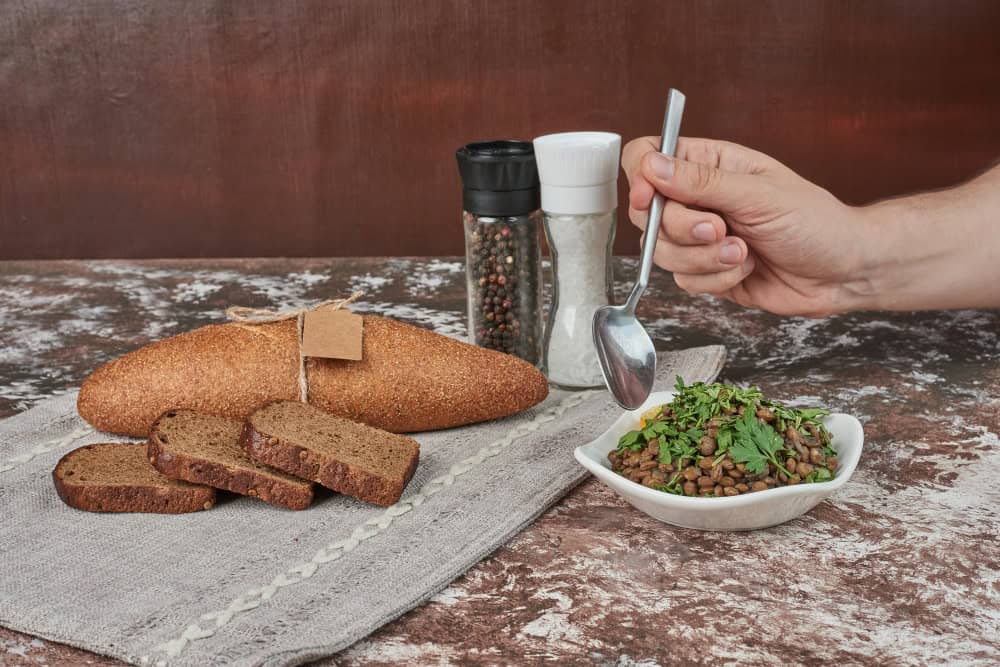
Salt has been a part of your diet for centuries – for flavour and preservation. But in a world like today’s, where health issues are so prevalent, the question that arises in one’s mind is, ‘How much salt is too much?’ Which type of salt are you using? Many people with high blood pressure use sea salt or Himalayan pink salt, thinking it is healthier, but there is more to it than that. What really matters? Is it the amount of sodium that ends up in your body? Or different salt types and their effect on your health? Let’s dive into the science behind sodium and hypertension and unravel the claims about different salts. This will help you choose the best salt for high blood pressure.
The Sodium-Blood Pressure Link

According to the World Health Organization (WHO), the connection between sodium intake and blood pressure has been well-established. Reducing the salt intake significantly lowers systolic and diastolic pressures in both hypertensive and non-hypertensive individuals [1]. Excess sodium can cause fluid retention and ultimately increase blood volume. This can lead to a rise in the pressure on the arterial wall and ultimately increase the risk of cardiovascular problems.
Why Total Sodium Intake Matters?

If sodium accumulates in the body, here’s what happens:
– Arterial Stiffness: High sodium intake, over time, can modify arterial structure. This can lessen the elasticity and increase the risk of heart events.
– Fluid retention: Sodium draws water into the bloodstream; hence, it can increase the blood volume, as well as tension on the vessel walls.
– Non-dipping Blood Pressure at Night: A high-salt diet can interrupt the normal night-time drop in blood pressure. This can lead to higher chances of cardiovascular events.
– Sodium Sources That Are Hidden: Many processed foods, especially Indian foods, contain surprisingly high amounts of sodium, which means salt usage is only a part of the picture.
Different Types Of Salts

Regular Table Salt
This is a refined sodium chloride (NaCl) with anti-caking agents and added iodine (to prevent thyroid issues). It dissolves quickly and has about 40% of sodium and 60% of chloride [2].
Sea Salt
Harvested through evaporation of seawater, this salt often retains trace minerals (calcium, magnesium, and potassium) and has a larger, coarser grain or flake texture. But its sodium content per gram remains almost identical to table salt.
Himalayan Pink Salt
Mined from ancient salt deposits, it carries a pink hue due to iron oxide and other trace elements. Marketing may promote it as a healthier alternative, though the sodium content can stay the same as regular salt.
Salt Substitutes/Low-Sodium Salts
These products can replace part of the sodium chloride with potassium chloride or other minerals. They reduce sodium content and may help lower blood pressure, but are not a proper solution (especially for those with kidney issues or any medications).
Does The Type of Salt For High Blood Pressure Matter?

As noted by the American Heart Association, sea salt and kosher salt have the same amount of sodium as table salt [3] – which means switching salt types alone does not reduce intake unless you yourself use less. Despite the variety of salts, the one that can drive your high blood pressure to a normal range is the total amount of sodium you intake. Thus, focusing on volume and usage is far more meaningful than chasing branded salt types.
Reduce the sodium intake and check changes in your blood pressure.
Get a Blood Pressure Monitor Just In A Click At Home!
Practical Tips To Effectively Manage High Blood Pressure

Since salt type alone can’t improve your condition of high blood pressure, here are some practical tips you can follow:
- Use salt substitutes, but also monitor your potassium intake (especially if you have kidney issues).
- Stick to a known, iodised table salt, rather than switching blindly between salts, as there is no best salt for high blood pressure.
- Read food labels, as most sodium can be found in processed/packaged foods. Be aware of the hidden sodium: pickles, packaged snacks, sauces, and frozen meals.
- Use other ingredients, such as roasted cumin powder, fennel seeds, chilli flakes, and lemon, for flavour – all of these can help reduce salt dependency and intake.
- You can control the salt intake if you cook meals at home more often.
- Gradually reduce the salt rather than abruptly; your taste buds may need some time to adapt.
- Use a salt spoon to measure how much you add instead of free-hand sprinkling of salt.
Final Take On Salt For High Blood Pressure
If you have high blood pressure or want to prevent it, the type of salt you use matters less than how much sodium you consume. Fancy options like sea salt or pink Himalayan salt may look healthier, but they contain nearly the same amount of sodium as regular table salt. The real solution lies in consulting your doctor, making small, consistent lifestyle changes, and taking steady steps toward lasting heart health.
FAQs
Q. How much salt should you be having per day?
According to the World Health Organization (WHO), the recommended amount should be less than 5 grams of salt per day – that is about one teaspoon to keep your blood pressure and heart health in check. Consuming more can increase your risk of hypertension and related heart problems.
Q. Which salt is good for health?
The healthiest salt choice is iodised table salt when used in moderation. It provides iodine and a predictable sodium level. All salts contain nearly the same amount of sodium.
Q. What are the benefits of low-sodium salt?
Low-sodium salt can replace part of the sodium chloride with potassium chloride; this can help reduce the amount of sodium you eat. They help lower the blood pressure and may improve heart health. However, people with kidney diseases or potassium-altering medications should add these salt substitutes cautiously.
Q. Which is the best salt for high blood pressure?
As there is no one best salt for people with high blood pressure, low-sodium or potassium-enriched salts can be taken only after consulting a doctor. More importantly, focus on reducing the total salt use across meals rather than just changing salt types.
Q. Can I drink Himalayan salt water every day?
No, drinking Himalayan salt water daily is not recommended. It does not provide extra health benefits or detoxify, but it might increase your sodium load, which can raise blood pressure and strain your kidneys over time.
References
1. Review summaries. World Health Organization
https://www.who.int/tools/elena/review-summaries/sodium-cvd-adults–effect-of-longer-term-modest-salt-reduction-on-blood-pressure.
2. American Heart Association, Sodium Sources
https://www.heart.org/en/healthy-living/healthy-eating/eat-smart/sodium/sodium-sources
3. Common High Blood Pressure Myths
https://www.heart.org/en/health-topics/high-blood-pressure/the-facts-about-high-blood-pressure/common-high-blood-pressure-myths
(The article is written by Sneha Jajoo, Intern, Clinical Health & Content, and is reviewed by Dr.Subita Alagh, Assistant Team Lead, Disease Content.)